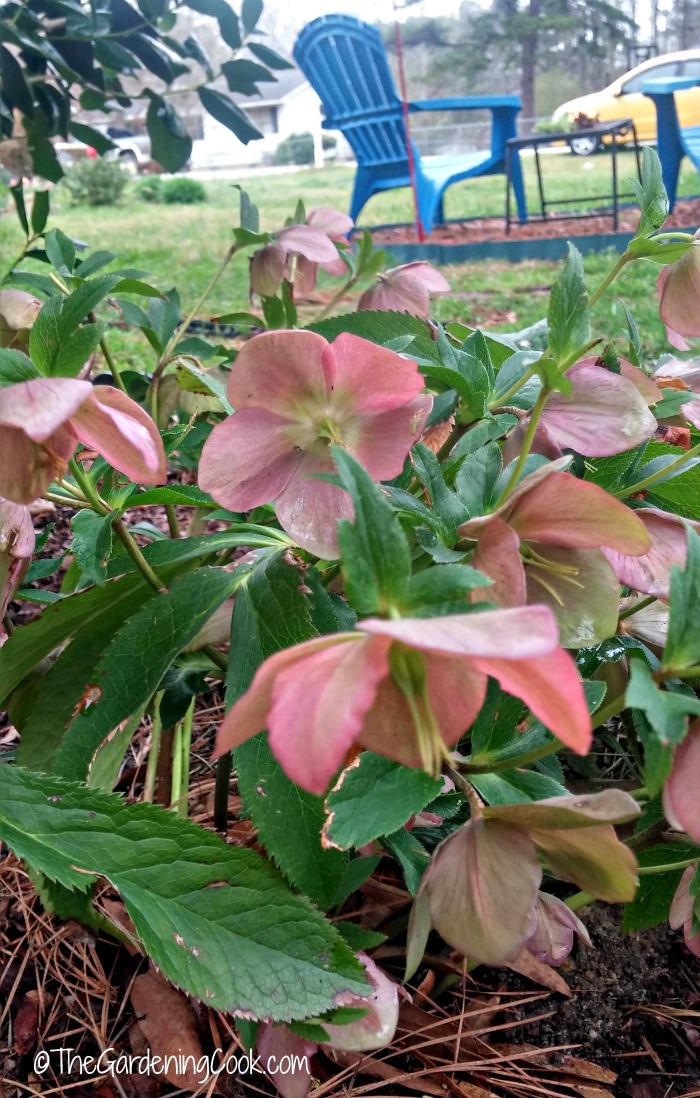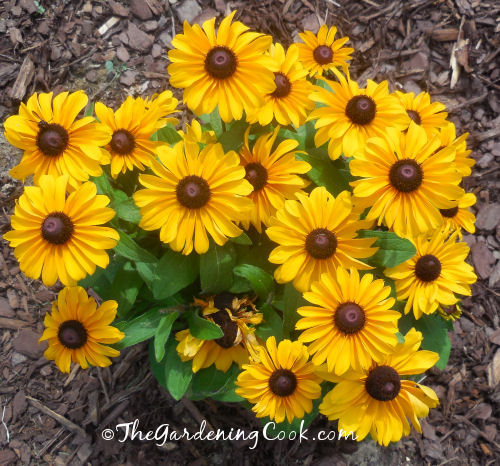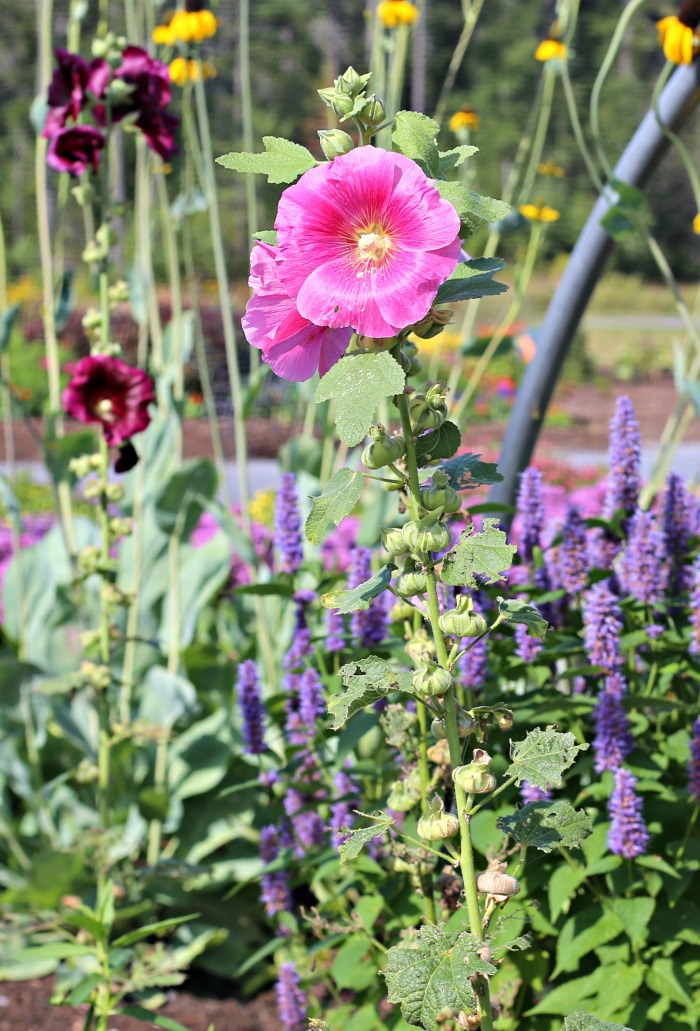There are many types of perennials, from tender types, which need to be grown in the southern part of the USA, to very hardy perennials that keep coming back after a freezing winter outside.
Budget conscious gardeners have a very good friend when they turn to growing perennials. What is not to like about a plant that comes back year after year and needs very little care and watering after the first year?
There is nothing quite like the feeling of wandering around your garden in spring and seeing the first bits of growth of perennials coming through.
If you love that rebirth, too, then hardy perennials are just the thing for you to grow. These plants can take the cold in stride and will reward you with blooms year after year.
Keep reading to get the list of the best hardy perennials as well as a shopping list to take with you on your next plant shopping trip.

Print out a Shopping List for Cold Hardy Perennials
The next time you go to the garden center in search of cold hardy perennials, print out and take along this cold hardy perennial shopping list.
You can print it out here, or click on the photo to go to the download page. Be sure to set your printer to “fit to page.”
For color all summer long, try growing these hardy perennials.
Generally speaking a hardy perennial will last three or more seasons even with a freeze over the winter. Depending on the zone you live in, hardy perennials will take varying degrees of sun.

I live in zone 7b (North Carolina) and my mother, who was also an avid gardener, lived in Northern Maine, in zone 4a. Many of these plants are those that both of us have grown successfully in our gardens.
Be sure to also check out my post for winter flowering plants to add a splash of color to your cold weather garden.
Columbine
Columbine is a woodland style of plant. It adds lushness and a whimsical look to any garden setting.
I love using it in cottage gardens, along with hollyhocks and fox gloves. It has a haphazard growing style that suits this look of garden.
Columbine is attractive to pollinators and hummingbirds because of the deep tubular flower shape. It is hardy in zones 3-0.
There is a red columbine called Eastern red columbine that grows wild in the USA.
Find out more about growing columbine here.
Astilbe

Astilbe is at the top of my list for one special reason. I dug up many of my astilbe plants from my mother’s garden bed one year when I was visiting her in Maine.
Her plants could take more sun than mine can. I have to grow mine in my shadiest borders.
There is nothing quite like a shade garden plant that will still flower! Most are hardy in zones 4-9 and can take more sunlight the further north you live.
For a look at all the colors of that this lovely plant comes in, see my Astilbe Photo Gallery here.
Shasta Daisy

Since my birth flower is a daisy, it is no surprise that I have Shasta daisies in my garden. I’ve tried them in various garden beds.
These perennials are hardy in zones 3-8,.and this is another plant that takes more sunlight the further north you live. I was not able to grow them in my most sunny garden beds.
To find out more about growing shasta daisy, see this post.
Gaillardia

Gaillardia, or blanket flower, is a daisy like perennial that will take more sunlight for me. This perennial is extremely resilient.
I changed the size of a garden bed last year and did not realize that I had some gaillardias growing outside of the new edge. They have been mowed over with a lawnmower and trampled on, but I still I discovered them growing this year!
Very hardy in zones 3-9. See my tips for growing gaillardia here.
Delosperma
Hardy ice plant – delosperma is a good choice when you are trying to fill an area of your garden that doesn’t get much moisture.
This hardy spreads quickly to cover a large area and has masses of bright flowers early in the spring and right through the summer months.

Delosperma is cold hardy in zones 5-9.
Daylilies
Daylilies are one of my favorite hardy perennials. I have several varieties and colors in my garden beds, as well as Oriental and Asiatic lilies.
(Find out the difference between Asiatic and Oriental lilies here.) Having all three types, and some re-blooming varieties give me color all spring and summer. Most varieties are cold hardy in zones 3-9.
Interested in the names of some daylilies? Be sure to have a look at my daylily photo gallery. It has many named varieties with lots of great photos.
Coneflowers

Echinachea, also known as coneflowers, are very hardy and drought resistant. They are easy to grow and attract butterflies and bees to any garden. I also leave the dried seed heads on the plant in the fall for the birds.
They are hardy in zones 3-9 and come in several colors.
The plants are robust and love the sun. See my tips for growing echinacea here.
Did you know that there are more colors of coneflower than the common purple variety? Find out about the varieties of coneflower here.
Salvia

Blue salvia flowers for me all summer long. The bees and hummingbirds both adore it. Every time I admire the plant, there are always a lot of bees around it. the plant is super drought resistant and very easy to grow.
Salvia matures quickly and will be a very large plant in no time at all. This bush is about 4 feet tall.
Helleborus – Lenten Rose

There is nothing quite like walking around my garden in winter, with snow on the ground and seeing my Hellebores in full flower!
These cold hardy perennials will take the cold in zones 4-9, and the Christmas Lenten rose will go as cold as zone 3!
Even though helleborus is an evergreen perennials, the leaves will look untidy as the year progresses. See my tips for pruning hellebores to keep Lenten rose looking great all year long.
More Cold Hardy Perennials
Can’t get enough of perennials that can take the cold? How about growing one of these this year?
Hosta

I have dozens of varieties of Hosta and so did my mother. These shade loving perennials are hardy in zones 3-9 and get better and better each year. They come in so many varieties and sizes.
I have them in all of my shady garden beds. They flower, too, but the leaves are the reason that I grow them.
One of my favorite varieties in Hosta Minuteman. It has deep white margins that really pop in a shade garden.
Rudbeckia – Black Eyed Susan

I planted rudbeckia, also known as black eyed Susan, in my first garden beds when we first moved to North Carolina 23 years ago. It spread like crazy and I took pieces of it and have it planted everywhere around my home.
It flowers all summer long and into the fall.
Black Eyed Susan needs to be kept in check, or it will take over. This variety is a dwarf rudbeckia that is easier to tame. The perennial is hardy in zones 3-9.
Hydrangea
Hydrangea hardiness depends on the variety. I grow the endless summer variety in my garden (zones 4-8) but the plant needs some protection in the coldest areas during the winter.
Mine started out as pinks and are all blue now. I have made a wreath with the flowers and they are very easy to water dry for indoor arrangements too.
Hydrangeas have very showy flowers and are one of my favorite plants. The farther north you live, the more sun they can take. Mine need to be in semi sunny borders for best results.
The trickiest part of growing hydrangeas is knowing when to prune them. This depends on whether they set blooms on old or new wood.
Be sure to also check out my guide to propagating hydrangeas. It features a tutorial demonstrating hydrangea cuttings, tip rooting, air layering and division of hydrangea plants.
Baptisia Australis

Baptisia Australis is a very hardy perennial. It transplants well, although the roots can be quite deep and will grow in a HUGE plant in a short time.
My variety is Blue Wild indigo and has the prettiest flowers that the bees love. It is hardy in zones 3-9.
Red Hot Poker

Red hot pokers, or torch lilies, are not quite as hardy as the other perennials on my list. It does best in zones 5-9, but is so easy to grow and quite different from my other hardy perennials that I wanted to include it.
I love the name and the flowers certainly do look like red not pokers, don’t they?
I have this perennial growing in my Southwest garden bed, with lots of cacti and succulents.
It adds a great pop of color before my daylilies start blooming and I love the showy flowers that it produces.
Dianthus

Dianthus, also known as Sweet William is one of my favorite perennials. There are two types – tender perennials, which are hardy in zones 8-10 and are treated as annuals in colder zones.
Another variety is a cold hardy dianthus which can take the cold in zones 3-10.
Even though I am in zone 7b, my annual dianthus will still grow well for me after a cold winter, and is a very pretty addition that gives color in early spring.
It grows into a larger mound with each succeeding year.
Hollyhocks
Commonly found in cottage gardens, holly hocks are a true delight in any garden setting.
The flowers are tall, so they proved lots of height in the garden and act as a great backdrop for other perennials that grow closer to the ground.
Hollyhock is considered a short lived perennial, but if you take care to cut the flowers off at the bases, they can live for several year.s
They are cold hardy in zones 3-8. Protect from strong winds.
Find out more about growing hollyhocks here.
Ajuga – Bugleweed

Ajuga, also known as bugleweed, is one of the toughest plants that I have ever grown. It started as a single plant in a small garden bed and quickly decided to take over.
I dug it up and planted it under a large pine tree and it loved it there in the semi shade.
More of it went into a totally shady border and it took over that garden bed, too. I dug it up from there and planted a foot of it in my
Southwest border that didn’t have many plants in it and this year it is a patch that measures 8 feet wide and counting.
Other plants will grow in the center of it (this hellebore is perfectly happy there) and it is cold resistant in zones 3-9.
If you are looking for a ground cover that keeps the weeds under control and has striking blue flowers throughout the summer, bugleweed is for you! It spreads like a weed and keeps the weeds at bay!
Yarrow
If you are a beginner, yarrow is a great cold hardy perennial to try. It is one of the easiest perennials to grow. Be sure that the plant gets full sun and a well draining soil and it will be happy.
Yarrow doesn’t mind poor soil and is even drought tolerant after it gets established. This perennial is cold hardy in zones 3-9.
Japanese Anemone

Also, called a fall anemone, this lovely perennials is a common garden plant seen in ate summer and fall gardens. Pretty satin like flowers gracefully sit on tall stems over short foliage.
Japanese Anenomes appear later in the spring, so they are a great choice to have when the spring bulbs start to die off. Cold hardy in zones 4-7.
Butterfly Weed
If you want butterflies in your garden, plant some butterfly weed (asciepias) It makes great, long lasting cut flowers and attracts butterflies like a magnet.
This showy native wildflower is easy to grow, very cold hardy, and even does well in poor and dry soils.
Butterfly Weed is an important nectar source for Monarch butterflies and provide food for developing Monarch caterpillars. Cold hardy in zones 4-9.
Lily of the Valley
One would not think from looking at this delicate plant that it would be very cold hardy but it really is.
Lily of the Valley (Convallaria majalis) a tough ground cover that makes me nostalgic when I look at it, since it grew every where around my neighborhood when I was growing up in Maine.
The plant will grow on riverbanks, or in shady woodland spots and even does well growing under trees. It is cold hardy in zones 2-9.
Have I missed one of your favorite hardy perennials? Tell me about your choices in the comments below!
Pin these cold hardy perennials for later.
If you would like to be reminded of this list later, just pin this image to one of your Pinterest gardening boards.

For more ideas on garden flowers, be sure to visit my Pinterest Flower board.
Admin note: This post first appeared on the blog in June of 2016. I have added six new cold hardy perennials, a printable shopping list as well as a video for your enjoyment.
Shopping List for Cold Hardy Perennials

Print out this shopping list and take it with you to the garden center the next time you are on the hunt for cold hardy perennials.
Materials
- This Shopping List
- Heavy Printer paper
Tools
- Printer
Instructions
- Print out this shopping list on glossy photo paper, or heavy card stock for durability.
- Print it out here
Notes

Recommended Products
As an Amazon Associate and member of other affiliate programs, I earn from qualifying purchases.




BARB
Wednesday 16th of March 2022
HELLO CAROL, I'M ASKING FOR YOUR ADVICE. I'M LOOKING FOR A PERENIAL PLANT THAT HAS WIDE RANGE OF TEMPERTURES AND IS EDIBLE.THANK YOU VERY MUCH. BARB
Carol Speake
Saturday 19th of March 2022
There are some herbs that are perennial and can be eaten.
John
Thursday 3rd of March 2022
I am looking for a low height preanal flower for Wisconsin. It is in full sun and will have little or no maintenance other than Mother Nature. It is desirable to have flowers all summer and not be a creeping plant. Preference for color would be blue, but not mandatory. Location for plant is a cemetery so the low height is important along with low maintenance and non-creeping. Any ideas? Thank you for your time!
Carol Speake
Thursday 3rd of March 2022
I am not fluent in all of the hardiness zones and which flowers to choose. A local landscaper or garden center should be able to give you this information.
Ally Allen
Thursday 29th of April 2021
Thanks, Carol. I just ran across your blog and I agree with how hardy all these plants are. I certainly have 99% of them and love them all. Hollyhocks, however, don't like me. Perhaps, I shouldn't take it so personal. Ha- I've not been able to be successful; let's put it that way. So, gladiolas have replaced them as my slender and tall giants of the cottage garden.
Ezzie
Tuesday 6th of April 2021
I'm just started gardening so not familiar with the zones. Please would you explain what the differing zones actually are?
Carol Speake
Monday 12th of April 2021
This link on the USDA site will explain hardiness zones.
Jeff
Saturday 6th of June 2020
Oriental poppies are a must to add to your list. The red is the most brilliant red that I’ve ever seen. They like full sun and can withstand the cold. I’ve had them for five years now. They come back stronger every year. I’m starting other colors this year. I live in zone 6.